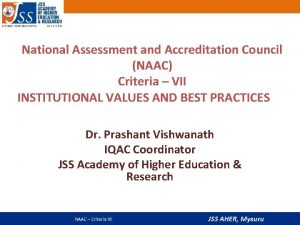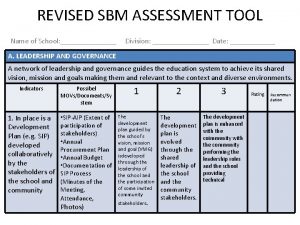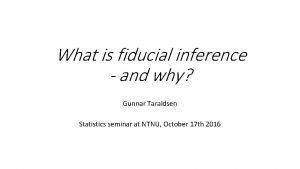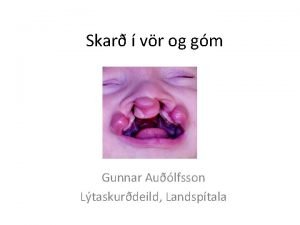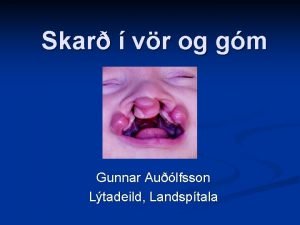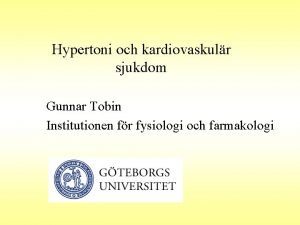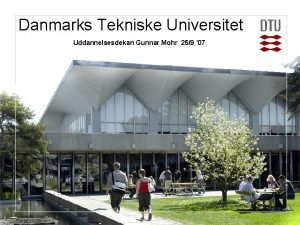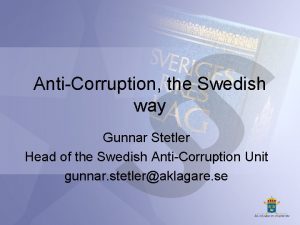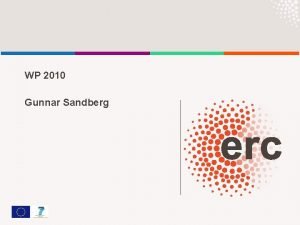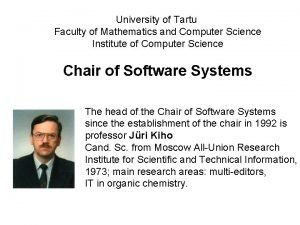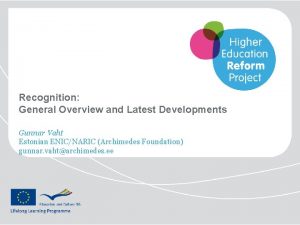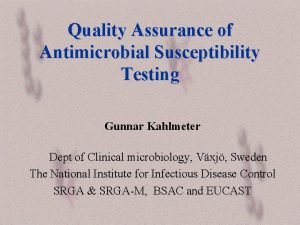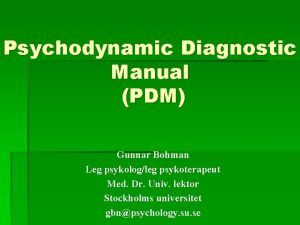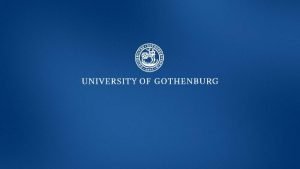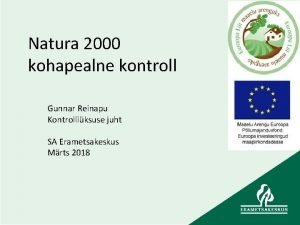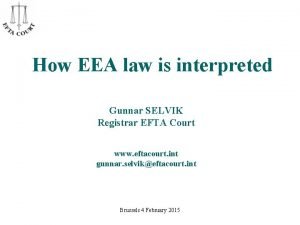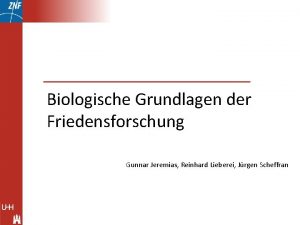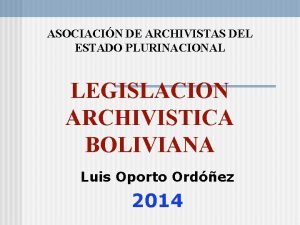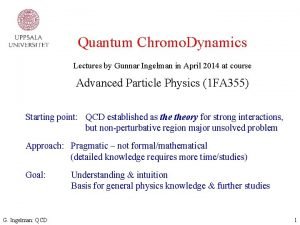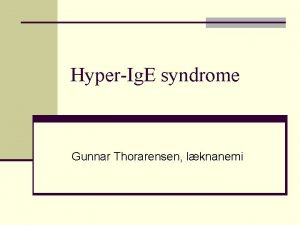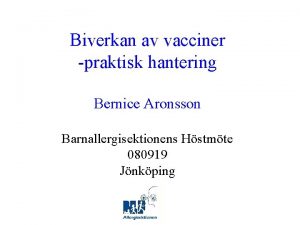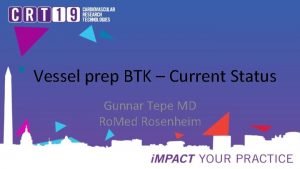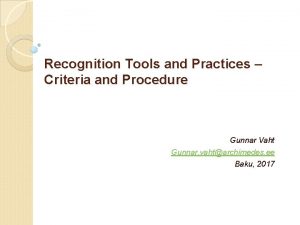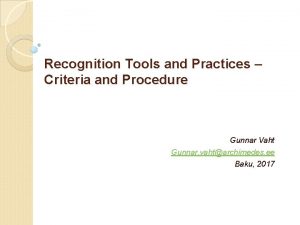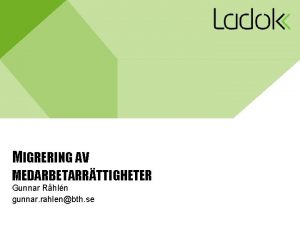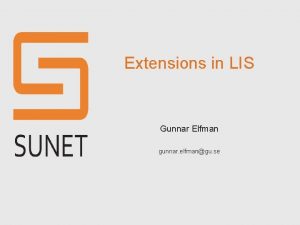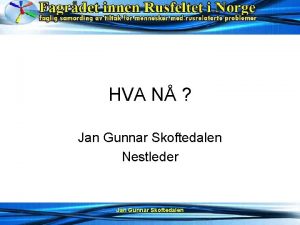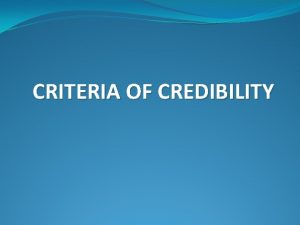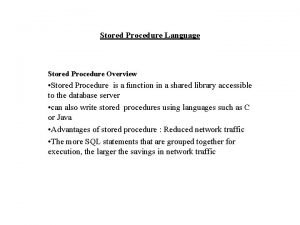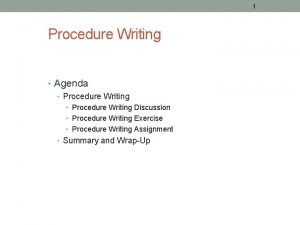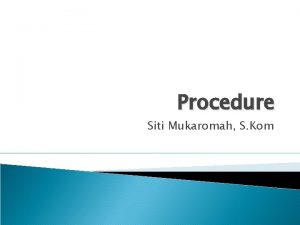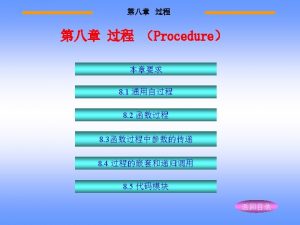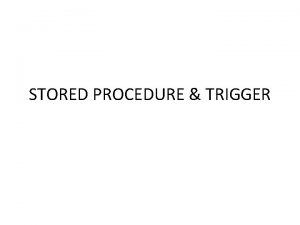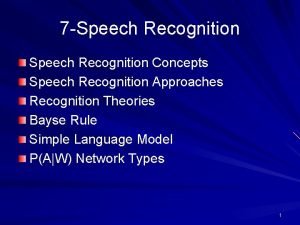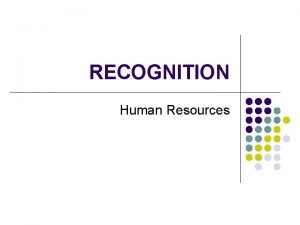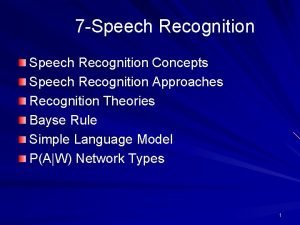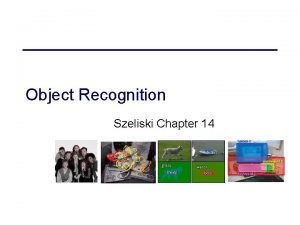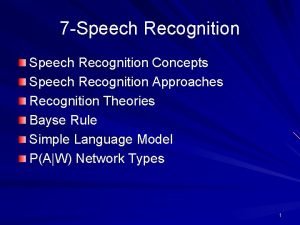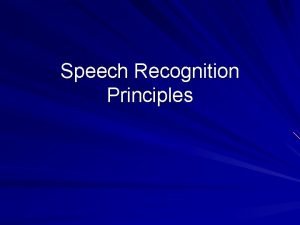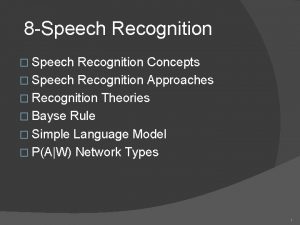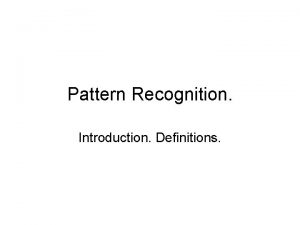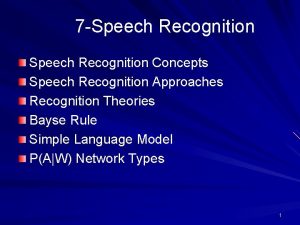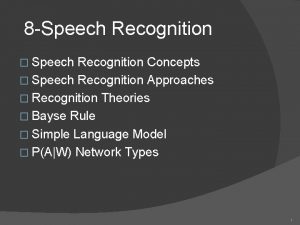Recognition Tools and Practices Criteria and Procedure Gunnar























- Slides: 23

Recognition Tools and Practices – Criteria and Procedure Gunnar Vaht Gunnar. vaht@archimedes. ee Baku, 2017

Revised Recommendation on Criteria and Procedures for the Assessment of Foreign Qualifications (adopted in 2010)

Outline I. General considerations II. Definitions III. General principles IV. Assessment procedures V. Assessment criteria VI. The outcome of the assessment

General principles Holders of foreign qualifications shall have adequate access, upon request, to an assessment of their qualifications Procedures and criteria should be transparent, coherent and reliable, periodically reviewed In case where the recognition decision is different from th recognition requested by the applicant, the competent recognition authority should inform the applicant of the reason for the decision Where learning outcomes are clearly documented, assessment should take these into consideration

The principles of recognition Recognition decisions are to be made on the basis of appropriate information on the qualifications for which recognition is sought The body making the assessment is responsible for demonstrating that an application does not fulfill the relevant requirements A substantial difference must be demonstrated in the case of refusal

Assessment procedures ◦ Information to applicant Standardised information on the procedures and criteria, automatically should be given to all applicants ◦ Information on the qualification for which recognition is sought The responsibility for providing information on the qualification is shared by applicants, HEIs and competent authorities ◦ ◦ ◦ Fees Translation Verification of the authenticity of documents Time limit Right to appeal

Criteria and procedure – good and not so good or unacceptable practice GOOD PRACTICE ◦ Acknowledge differences between educational systems and programmes ◦ Moving away from seeking full comparability of the foreign qualification – towards comparing only these aspects relevant to the rights and functions NOT SO GOOD OR UNACCEPTABLE PRACTICE ◦ Seek for full comparability of programme contents ◦ Using programme duration and content details as main criteria for recognition

Criteria and procedure – good and not so good or unacceptable practice GOOD PRACTICE ◦ Wherever possible, recognition is based on comparison of learning outcomes and the function of qualification NOT SO GOOD OR UNACCEPTABLE PRACTICE ◦ Assessment involves detailed comparison of curricula and material studied

Assessment criteria – a good practice

Information needed for recognition About an awarding body ◦ Type of the institution ◦ Status (recognition) of the institution ◦ Accreditation and quality assurance About ◦ ◦ ◦ a qualification Access requirements Formal duration and workload (credits) Structure and content of the programme Function of the programme Formal rights (academic/professional) LEARNING OUTCOMES

Fair recognition Judge only value of qualification, not external factors Less No attention to formal structures detailed comparison of curricula More emphasis on learning outcomes: what a person knows and is able to do (knowledge, skills and competence)

Information to applicant Acknowledgement of the receipt of their application Standardised information on the procedure and criteria for the assessment of qualification (required documents, translations, principles and criteria, fee, time, status of the evaluation statement) Advice applicants about the possibilities and procedures for submitting applications Information on educational systems and legal acts; information on principles of recognition

Fees The competent recognition authorities should consider whether it is possible to provide for assessment as a public service free of charge. Where this is not feasible, fees should be kept as low as possible.

Translations Acceptance of as much languages as possible without translations Many countries or institutions issues the documents (diplomas, transcripts, Diploma Supplements) in two languages As a rule, titles of foreign qualifications should be provided in the original language, without translation ◦ For example the degrees “Bakalaureus”, “Master” and “Doctorandus” from different higher education systems are comparable qualifications. The result of translations may give a wrong value and inadequate recognition decision of the qualification.

Verification of the authenticity Verification of authenticity is important Verification is a part of the assessment procedure Overly complicated and costly authentification procedures, such as full legalisation of all documents is still in practice. States are encourage to review any national laws requiring the complicated procedures. Modern communication tools make it easy to verify the authenticity.

Assessment criteria ◦ Status of the institution ◦ Assessment of individual qualification

Assessment criteria Status of institution ◦ Whether the HEI belongs to the higher education system ◦ Type of institution – HEI or vocational school; university or professional HEI ◦ Quality assessment and assurance/accreditation ◦ Status and recognition of institution in home country

Assessment criteria Assessment of qualification ◦ Quality / accreditation ◦ Access requirements (previous education) ◦ Profile; field of study – specialisation ◦ Content (subjects), practice, research, graduation requirements ◦ Workload (credits) and/or nominal duration ◦ Level in National Qualifications Framework, reference to overaching frameworks (EQF) ◦ Function of qualification (formal rights in the home country – access to further studies; rights in labor market) ◦ Professional status ◦ Learning outcomes

Assessment of learning outcomes Learning outcomes – focus attention on what is to be learnt and what is actually learnt rather than the process of learning It is important to know what an holder of qualification can do with the qualification Generic learning outcomes (NQF) Specific learning outcomes (profile description)

Substantial difference Recognition unless substantial differences can be shown. Qualifications from different education sytems are always different. There are no equivalent or identical qualifications. Be sure what is „substantial“.

NOT a substantial difference Nominal duration of a programme is one year shorter Less requirements for final thesis Differences in programme content (access qualifications) On-line /part time /extramural study Private institution The programme is not provided in host country The awarding institution is recognised but unknown to us, and missing in the international databases Teaching staff ahs not the same qualifications requirement as required in host country Ranking

Substantial difference (in Estonian recognition practice) Quality is not assured Qualification is not recognised by the authorities in the country of origin (not an official degree) Qualification doesn´t give acces to next cycle of higher education in the country of origin Diploma mill Substantial part of courses of the programme is taken at a lower level of education Substantial part of courses transfered from an unrecognised institution providing a study programme abroad without legal permission or quality assured Degree is awarded with failed marks

Thank you!
 Naac criteria 7 new format
Naac criteria 7 new format Big data: issues, challenges, tools and good practices
Big data: issues, challenges, tools and good practices Sbm tools
Sbm tools Fiducial inference
Fiducial inference Gunnar auðólfsson
Gunnar auðólfsson Gunnar auðólfsson
Gunnar auðólfsson Gunnar tobin
Gunnar tobin Karakterskala ug
Karakterskala ug Gunnar stetler
Gunnar stetler Gunnar sandberg
Gunnar sandberg Gunnar nellis
Gunnar nellis Gunnar vaht
Gunnar vaht Gunnar kahlmeter
Gunnar kahlmeter Gunnar bohman
Gunnar bohman Efferenta
Efferenta Gunnar reinapu
Gunnar reinapu Gunnar selvik
Gunnar selvik Gunnar jeremias
Gunnar jeremias Normativas de gunnar mendoza
Normativas de gunnar mendoza Gunnar ingelman
Gunnar ingelman Gunnar thorarensen
Gunnar thorarensen Gunnar anderson height
Gunnar anderson height Bernice aronsson
Bernice aronsson Btk rosenheim
Btk rosenheim
